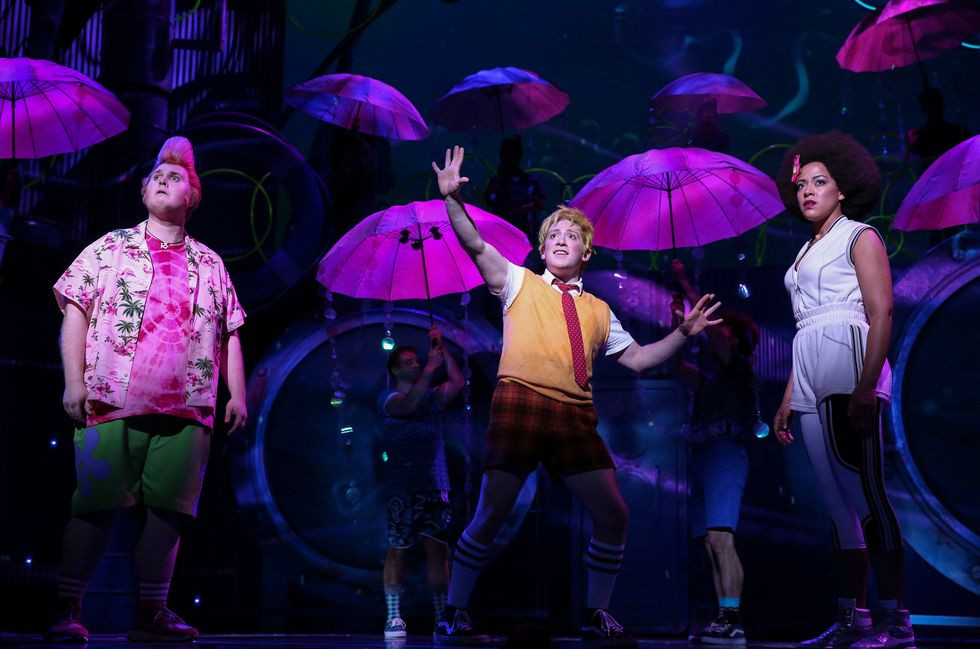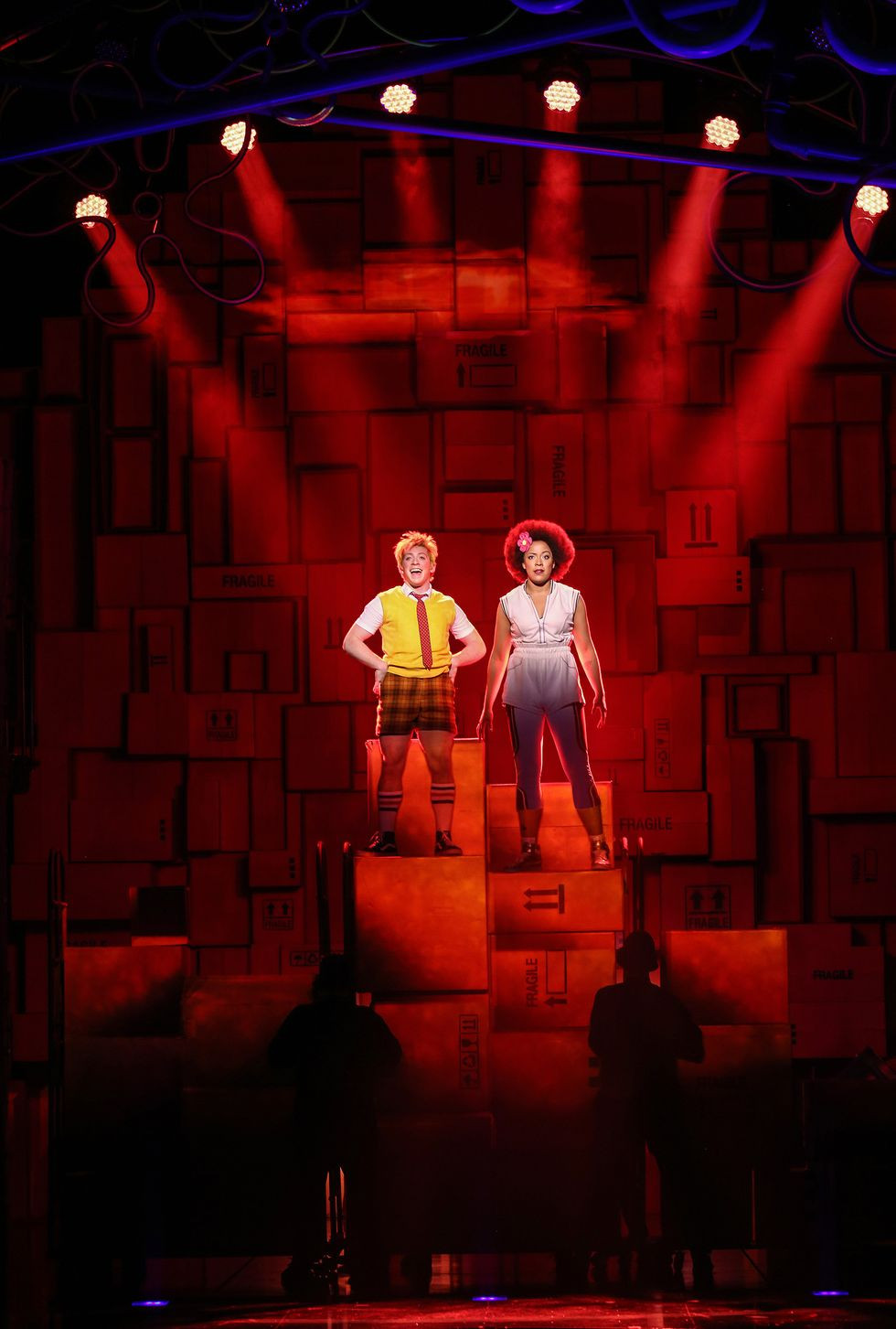Broadway has always been a stage for spectacular dance, but when SpongeBob SquarePants splashed onto the scene, it brought a tidal wave of unexpected movement. Christopher Gattelli, the Tony Award-winning choreographer, describes his cast as “unicorns,” a testament to the incredible versatility required to bring the animated world of Bikini Bottom to life through dance. This isn’t your typical Broadway choreography; it’s a vibrant, eclectic mix as diverse as the musical styles of the show itself, making Spongebob Squarepants Dance a truly unique spectacle.
Gattelli, known for his work in Newsies and South Pacific, embraced the challenge of translating the cartoonish antics of SpongeBob and his underwater pals into compelling stage movement. The animated series, beloved by both children and adults for its quirky humor and imaginative setting, demanded a stage adaptation that was equally inventive. Set designer David Zinn created an immersive environment reminiscent of being inside a “piñata,” as Gattelli aptly describes, providing a playground for boundless creativity.
Working under the visionary direction of Tina Landau, Gattelli found himself in a realm where anything was possible. Landau, known for her visually driven and unconventional theater work, encouraged experimentation and pushed the boundaries of traditional musical staging. This collaborative atmosphere allowed Gattelli to truly “flex every single choreographic muscle,” drawing upon a vast repertoire of styles to match the show’s wildly diverse score.
 Christopher Gattelli on choreographing spongebob squarepants dance
Christopher Gattelli on choreographing spongebob squarepants dance
The music of SpongeBob SquarePants is a kaleidoscope of genres, featuring contributions from 16 different artists spanning pop, rock, country, and hip-hop. This sonic diversity is mirrored in Gattelli’s choreography, which seamlessly blends tap, hip-hop, jazz, contemporary, and everything in between. The sheer range of musical styles necessitates a dance vocabulary that is equally broad, ensuring that the SpongeBob SquarePants dance numbers are as surprising and engaging as the score itself.
One standout example of Gattelli’s choreographic ingenuity is the number “I’m Not a Loser.” Penned by They Might Be Giants, this song becomes a tap extravaganza featuring Squidward Tentacles, played by the phenomenal Gavin Lee. Lee, renowned for his tap skills in Mary Poppins, is given free rein to showcase his expertise, amplified by a costume that gives him extra limbs to enhance the visual spectacle of his tapping. Gattelli describes Lee’s performance in this number as “off the charts,” highlighting the exceptional talent within the “unicorn” cast. The number is further enriched by a chorus line of 12 dancers portraying 50 sea anemones, adding layers of visual complexity and comedic flair to the SpongeBob SquarePants dance.
 Christopher Gattelli describing the versatility of spongebob squarepants dance cast
Christopher Gattelli describing the versatility of spongebob squarepants dance cast
Initially, bicycle choreography was explored for a particular moment in the show, even appearing in promotional clips. However, Gattelli and Landau’s collaborative process led them to a different approach. As Gattelli explains, removing the bikes allowed for more dynamic and expressive movement from the dancers. This anecdote perfectly illustrates the open and experimental nature of the production, where “even the wildest idea gets a hearing,” and creative solutions are constantly sought to best serve the story and the SpongeBob SquarePants dance sequences.
Ultimately, SpongeBob SquarePants on Broadway transcends the typical musical theater experience. Gattelli’s choreography, in perfect harmony with Landau’s direction and the show’s overall design, creates a world that is both familiar and utterly new. It’s a “carnival,” a “rock concert,” and a “vaudeville” all rolled into one, delivering a non-stop barrage of surprises and delights. The SpongeBob SquarePants dance is not just an element of the show; it’s integral to its identity, contributing significantly to the musical’s joyful, chaotic, and undeniably unique charm.
